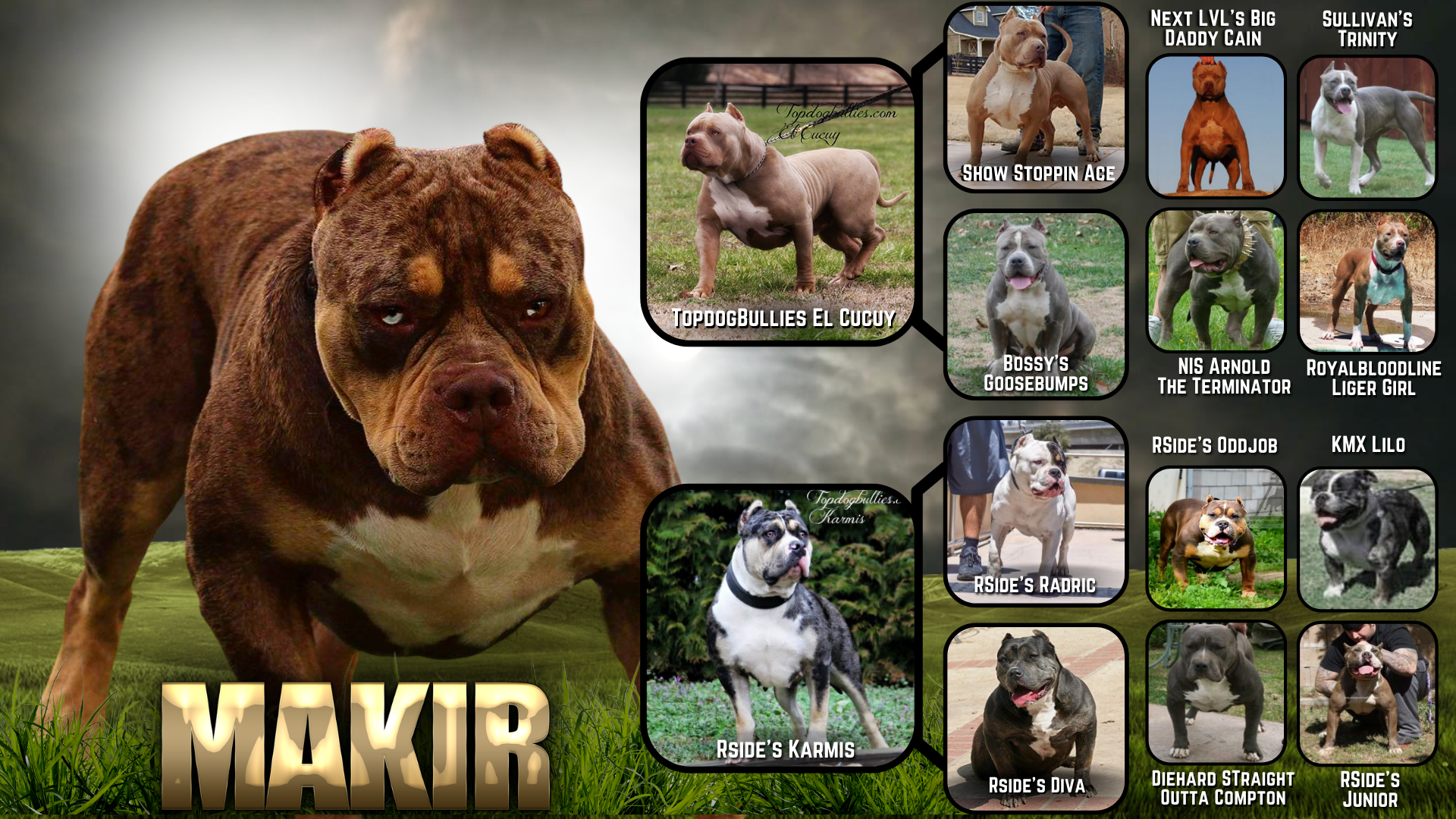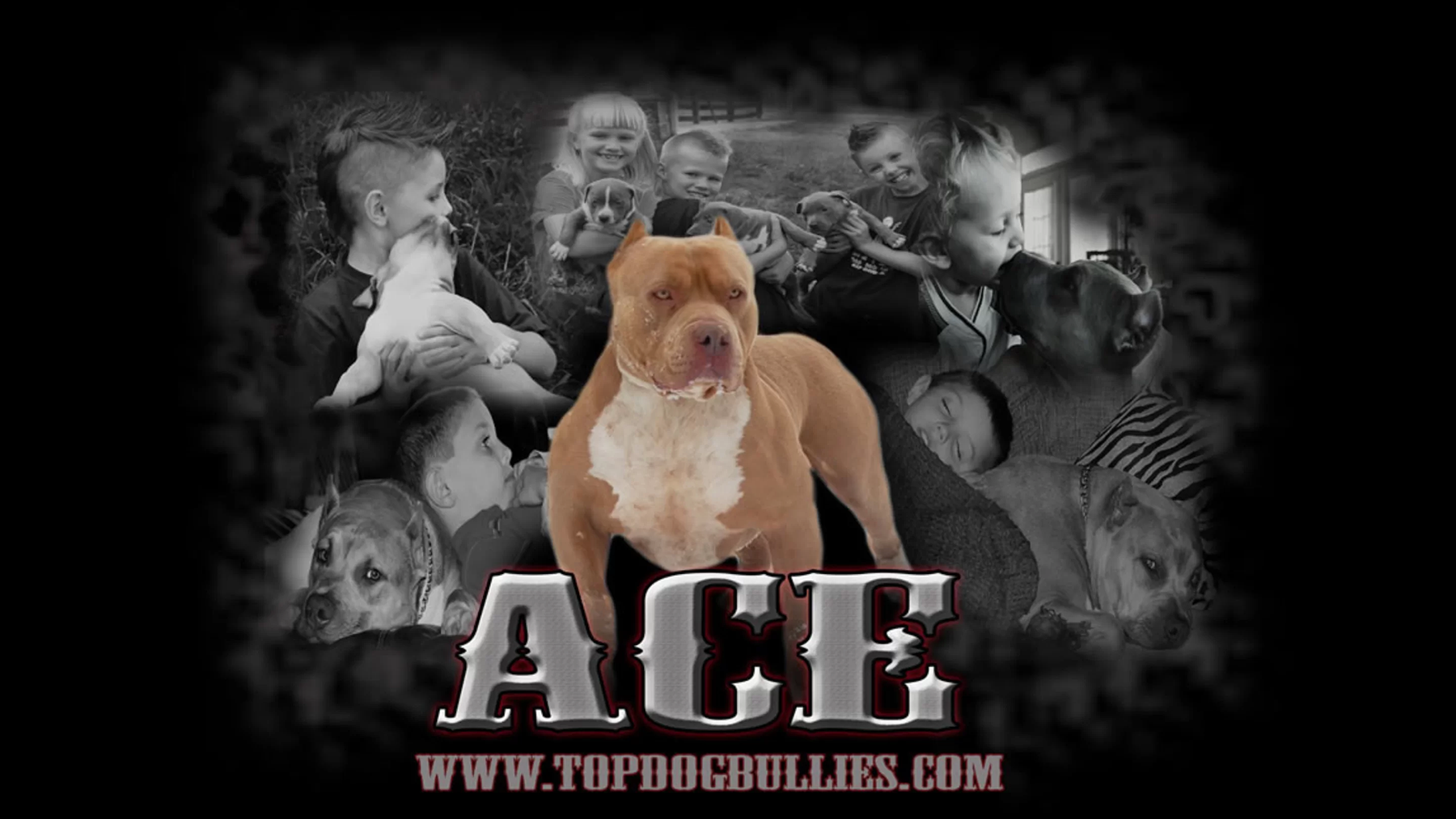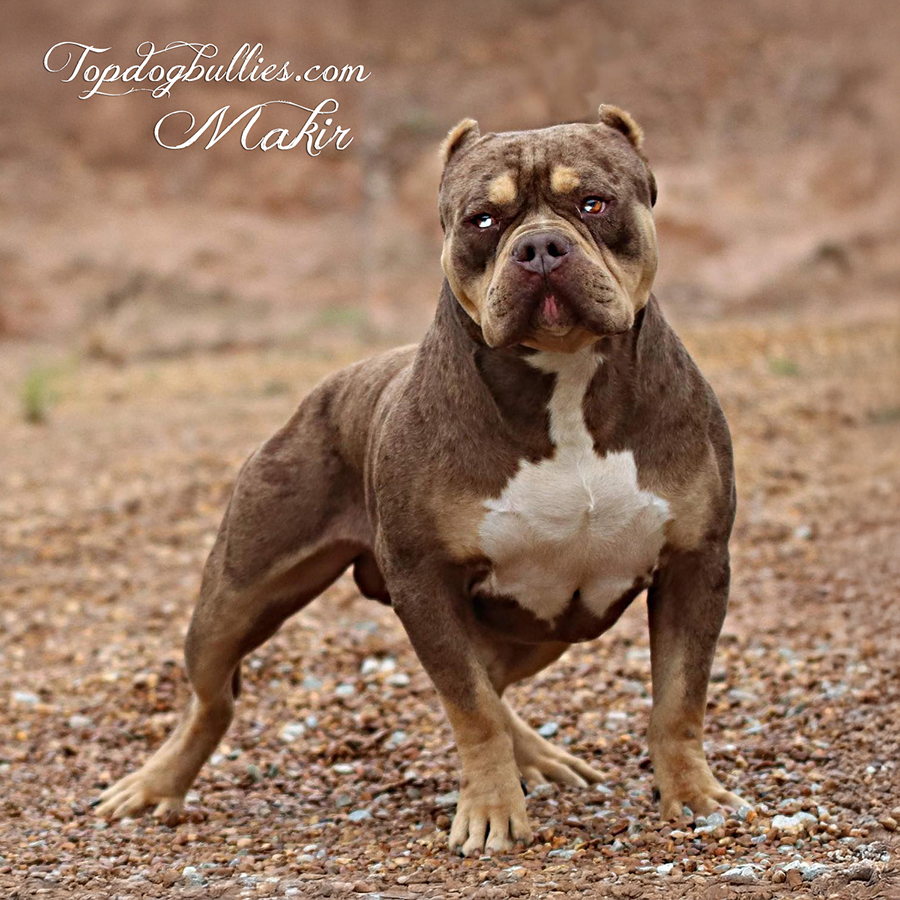WEIGHT: 125 lbs.
REG: ABKC
COLOR: Chocolate Merle Tri
BLOOEDLINES: Greyline, Bossy, RCP

How are chocolate tri merle XL Bullies or XXL Pit Bulls created?
Creating a chocolate tri merle XL Bully, also known as a chocolate tri merle XXL Pit Bull, requires careful selection of breeding pairs to achieve the desired coat color, pattern, and size. This process involves understanding and combining specific genetic traits:
Coat Color and Pattern Genetics
Chocolate Color: The chocolate (liver) coloration results from a recessive gene that both parents must carry and pass on to their offspring.
Tri-Color Pattern: The tri-color pattern, featuring three distinct coat colors, is produced by the interaction of the Agouti gene (A-Locus) and the Tan Point gene. Both parents need to carry the recessive tan point allele for this pattern to appear in the puppies.
Merle Pattern: The merle pattern causes a mottled or patchy appearance in the coat and is governed by the merle gene (M-Locus). To produce merle offspring, one parent must carry the merle allele. It’s crucial to avoid breeding two merle carriers together, as this can lead to severe health issues in the puppies.
Breeding for XL Size
Achieving the XL or XXL size classification involves selecting breeding pairs that naturally exhibit larger physical builds. Consistently breeding dogs with these traits over multiple generations increases the likelihood of producing XL-sized offspring.
Health and Ethical Considerations
While aiming for specific aesthetic traits, it’s essential to prioritize the health and well-being of the dogs. The merle gene, in particular, is associated with potential health concerns, including hearing and vision impairments. Responsible breeders conduct genetic testing and adhere to ethical breeding practices to minimize these risks.
Prospective breeders should thoroughly research canine genetics and consult with veterinary professionals to ensure informed and ethical breeding decisions.







